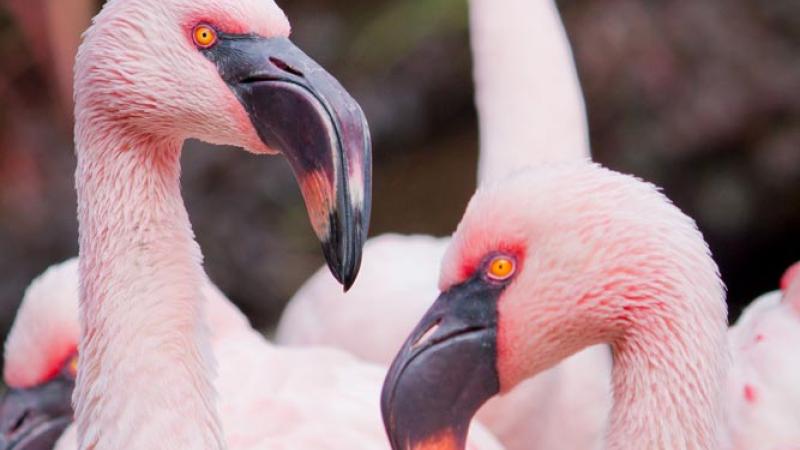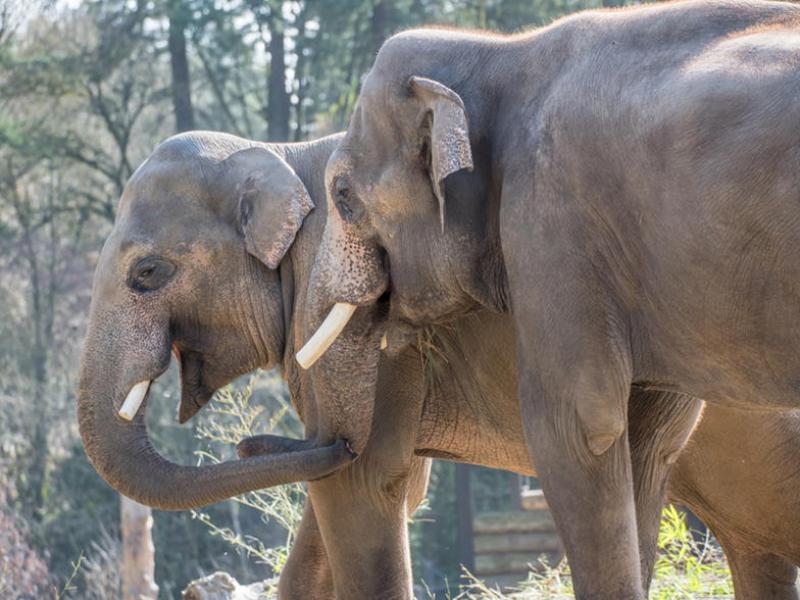
Lesser Flamingos are filter-feeding wading birds native to Africa. They are the smallest of the six flamingo species, and the pinkest of the two old world species.
Lesser flamingo behavior and facts
- Lesser flamingos get their pink color from pigments in an algae called spirulina, which is their primary food.
- Flamingos have a poor sense of taste and no sense of smell.
- Flocking helps flamingos evade predators such as lions, leopards, cheetahs and jackals.
- During courtship, lesser flamingos gather to march back and forth, all going in the same direction.
- They stand tall with their necks stretched upwards and flap their wings to flash the colors of their feathers.
- Adults are left flightless for around three weeks during their molt.
From birth to death
- Lesser flamingos breed primarily in the salty Rift Valley lakes of East Africa.
- Smaller breeding congregations also occur in West Africa, southern Africa, Asia, India and Pakistan.
- Lesser flamingo breeding colonies may number in the thousands of pairs, and are often mixed with greater flamingos.
- They breed on large undisturbed alkaline and saline lakes, salt pans or coastal lagoons.
- Raised mud nests help keep flamingo eggs cool and dry.
- Flamingo chicks are fed a liquid diet by their parents.
- Chicks can walk a week after hatching.
Vital statistics
- Adult lesser flamingos are on average 35.5 inches in length
- Flamingo hatchlings typically weigh between 2.5 and 3.5 ounces
- Adults weigh between 2.5 and 5 pounds
Status
IUCN Near threatened
Lesser flamingos, the Oregon Zoo and you
The zoo's lesser flamingos live in the Africa Rainforest Aviary.




